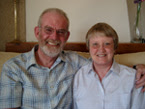For 9 days in Menorca a few days ago this was the view from our window.
The hotel was the Valentin at Son Bou...
...which was very comfortable. We were on half board and the food was excellent.
They had a system where wine, sangria or beer was "on tap" for the evening meal.
Many people go to this hotel for a "holiday" and go no further but we went to Menorca to see the island so we hired a car for our stay so we could tour.
Our first excursion was to the capital, Maó or Mahón as it is known which is famous for having one of the largest natural harbours in the world.
It is a delightful city and in keeping with the island everything is on a small scale.
The island has been invaded throughout history. The British were there in the 18th century for 48 years, lost it to the French, retook the island for another 19 years before losing it again to a Franco-Spanish invasion lasting 5 months in 1782 before recapturing it in 1798 before passing it back to the Spanish in 1802.
The Romans settled on this island followed by Vikings, Arabs and Moors. It came under the rule of Spain in the 13th century until the Ottomans in the 16th century.
Today, the main industries are tourism and making cheese.
Leaving Mahón and going to the south-east corner of the island we visited Punta Prima and then tried to follow the coast road back to our hotel.
We had 1 rather wet day the following day so we stayed in the hotel and in the afternoon which was a bit brighter played table tennis, pétanque and had a go at archery before attending a Spanish lesson with Angelo the best part being the obligatory sangria at the end.
That evening the entertainment in the hotel was by none other than John Lennon and Paul McCartney. Needless to say, they were very good.
The following day we headed to the western end of the island and the city called Ciutadella which had been the capital before Mahón.
Again, it is on the small side for a city but that is one of the endearing aspects of it...
...although it had a largish harbour you can see why Mahón was chosen.
It was at the Tourist Information centre that I caught a glimpse of some "prehistoric" ruins and asked where they were. We were directed to Torretrencada where we saw the taula or table which can be seen in the photo above.
Also, in the same settlement stood a well. These date from around 2,000 years BC and are still standing!
The following morning we visited the Naveta de Tudons, a burial monument from 1,500 BC...
...and in the afternoon after a light lunch at Cala Morell we saw the cave dwellings...
...which formed quite a large settlement from the bronze age.
Windmills are scattered all around the island although this one was a part of a restaurant, Moli D'es Raco in Mercadal.
The following day we walked up the rather rugged path to the Castel de Santa Àgueda on the 3rd highest point on the island at 264 metres.
The castle is in ruins although there is a plan to refurbish it and some of the stonework has already been completed.
On the walk up to the top you can see that access is only by foot.
While we were in the north part of the island which is sandstone, the southern half being limestone, we visited Fornells and the Torre de Fornells which is one of the largest towers on Menorca and was constructed at the beginning of the 19th century.
We also saw the Ermita de Lourdes which is half way up to the tower, the visit providing a welcome break from the gradual climb to the top.
Just along the coast to the west of Fornells is the Faro de Cavalleria, the northernmost tip of the island. The lighthouse was built in 1857, it is 15 metres high and 94 metres above sea level.
Next day we had to stop for the photo opportunity of what I frequently have to say...
...and then a little further down the coast to Es Grau where I just had to have a plate of grilled sardines for lunch, Margaret had a salad,...
...at the delightful seafront restaurant Tamarindos.
After lunch, to the Talaiot y Taula de Trapucó, south of Mahón, one of the largest prehistoric settlements on the island.
It had the largest taula and naveta we had seen so far.
Final morning and we decided to take the tourist train around the local area. We had been around the island but had not seen what was on our doorstep! As it happened, there wasn't much so on returning to the hotel we set off in the car to explore a little further afield...
...and we visited another prehistoric settlement nearby at Torre d'en Galmès which was the largest settlement we had come across...
...with many parts of structures for roofs and doorways still standing some 3,400 years after they had been constructed.
There were even caves which had been used as burial chambers and subsequently used by other inhabitants during the last couple of millennia as homes. What an incredible island and one of the largest outdoor museums in the world!
And what could be better to finish off a wonderful holiday than to be invited to have a meal with friends on our return to Barcelona!
To see all of the photos and bits of video from this trip, click HERE.







































No comments:
Post a Comment